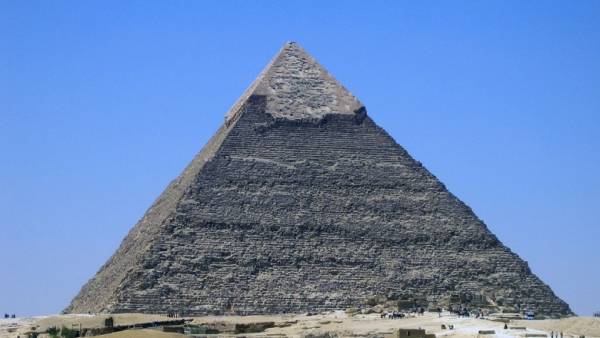The pyramid of Cheops can focus radio waves
The pyramid of Cheops can concentrate electromagnetic energy into the inner chambers and focusing it in the space under its base. This is the conclusion reached by scientists who influenced the pyramid of radio waves to investigate its resonant electromagnetic response. The results of the study of physics plan to use in the design of nanoparticles that will be able to reproduce similar effects in the optical range.

Such nanoparticles may find application, for example, in the development of sensors and efficient solar cells. A study published in the Journal of Applied Physics.
News look Like ancient Nubian pyramids in Sudan (photo)
look Like ancient Nubian pyramids in Sudan (photo)
The Egyptian pyramids are surrounded by many myths and legends, but reliable scientific information about some of their qualities little. In the new work, physicists have decided to explore how the pyramid will interact with electromagnetic waves proportional, that is, the resonance length. The calculations showed that in this resonance condition, the pyramid is able to concentrate the electromagnetic field and the highest energy density is in the inner chambers of the pyramid. It also turned out that the pyramid is capable of focusing radio waves in the space under the base, where there is a third unfinished chamber.
Such conclusions scientists have been able to do with simulation and analytical methods of physics. First, a group of scientists from ITMO University and the Laser centre Hanover (Germany) estimated that the resonance for the pyramid are radio waves with a wavelength range from 200 to 600 meters. They then modeled the electromagnetic response of the pyramid and calculated the extinction cross section is the fraction of the energy of incident waves, which the pyramid can dissipate and absorb in resonance conditions. Then for the same conditions scientists have obtained the distribution of the electromagnetic fields inside the pyramid.
News Egyptian pyramids are forcing tourists to suffer
Egyptian pyramids are forcing tourists to suffer
“Given the great interest in the Egyptian pyramids, we decided to look at the Great pyramid (also known as the pyramid of Cheops — the Great pyramid of Giza — approx. Indicator.Ru) as part of resonance scattering of radio waves, says one of the authors of the article, Andrey Evlyukhin. — Due to lack of information about the physical properties of the pyramids we had to use some assumptions. For example, we believed that any unknown cavities in it, and the material from which it is made, is uniformly distributed in its volume and has the properties of ordinary limestone”.
To explain these results, scientists conducted a multipole analysis. In physics, this method is applied in order to study how a complex object interacts with the electromagnetic field. The object scattering field in this case is replaced by a set of simple sources radiation multipoles.
The combination of radiation multipoles gives the same result as the dissipation field the whole object. Therefore, knowing the type of each multipole, we can predict and explain the distribution and configuration of the scattered field in the system.
Physicists drew attention to the pyramid of Cheops in the study of the interaction of light with dielectric nanoparticles. How nanoparticles scatter light depends on their size, shape and refractive index of the material of which they consist. By varying these parameters, it is possible to define resonance regimes of scattering and their use in developing devices to control the flow of light at the nanoscale.
Now scientists plan to use the results to recreate the similar effects on the nanoscale. “Choosing a material with suitable electromagnetic properties, it is possible to obtain nanoparticles of pyramidal shape, which is promising for practical application in the development of nanosensors and effective elements for solar energy,” says co-author Polina Kapitanova from the ITMO University.